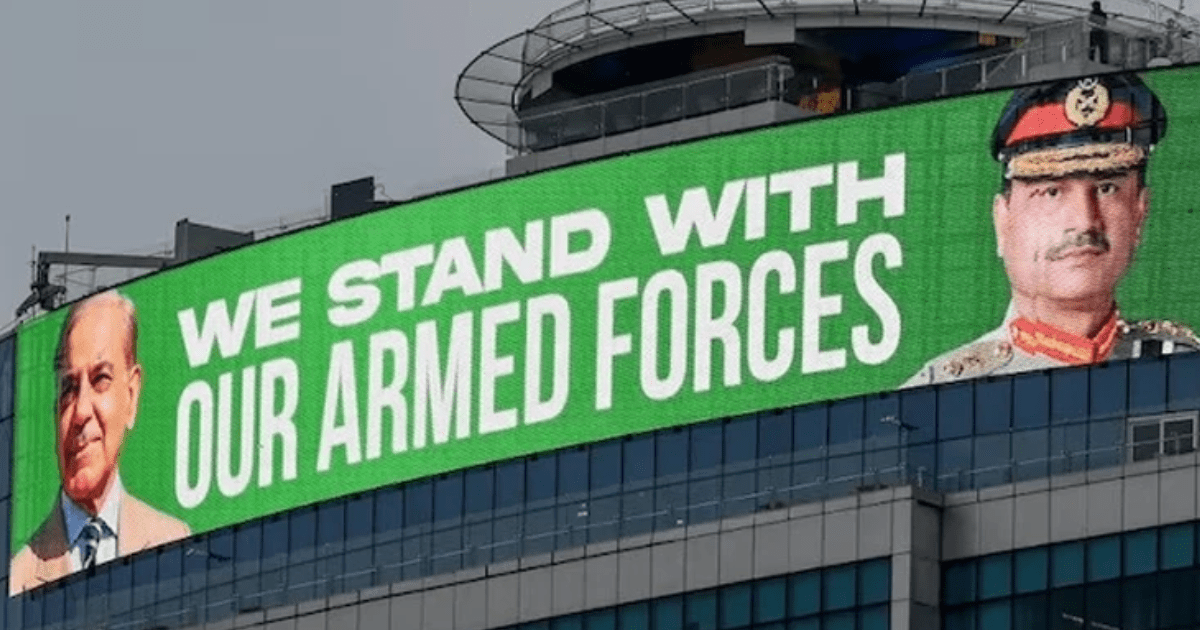Operation Bunyan-un-Marsoos: Pakistan Strikes Back


Operation Bunyan-un-Marsoos: Nuclear-armed rivals India and Pakistan came dangerously close to a full-scale war. Yet, after several days of rising tensions, US President Donald Trump announced that both countries had agreed to an “immediate and full ceasefire.”
Shortly after this announcement, both Islamabad and New Delhi confirmed the agreement to halt all military operations, marking a rare moment of diplomatic success in South Asia.
Operation Bunyan-un-Marsoos: Escalation Sparked by Pahalgam Attack
Tensions flared after a deadly assault on April 22 in Pahalgam, Indian Illegally Occupied Jammu and Kashmir (IIOJK), which resulted in 26 casualties. Although India blamed Pakistan-based groups for the attack, it offered no concrete evidence. In contrast, Pakistan categorically denied any involvement.
https://whatshappening.pk/pakistan-india-latest-update-sudden-ceasefire-announced/
On April 23, India responded by closing the Wagah border, cancelling Pakistani visas, and suspending the Indus Waters Treaty. Pakistan swiftly denounced these moves as an “act of war” and sealed the Wagah border from its side as well.
Operation Bunyan-un-Marsoos:India’s Offensive and Pakistan’s Retaliation
On the night of May 6–7, India launched an attack on Pakistan, leading to the gravest military confrontation in decades. The situation escalated rapidly, resulting in dozens of casualties until diplomacy finally succeeded in calming both sides.
Despite repeated warnings from the Pakistani government, India continued provocative actions, heavily influenced by its war-driven media coverage. These included frequent drone intrusions, which forced Pakistan to respond decisively.
Pakistan’s Key Military Responses During Operation Bunyan-un-Marsoos
May 6–7: Unmatched Air Superiority
The Pakistan Air Force (PAF) claimed a major victory by downing five Indian fighter jets—three Rafale, one SU-30, and one MiG-29—through Beyond Visual Range (BVR) combat. Notably, Pakistan incurred zero losses, and officials described the outcome as a “100–0” success.
May 7: Drone Assault Neutralised
On May 7, Pakistan’s defence forces successfully intercepted and destroyed 78 armed drones of Israeli origin—specifically the Heron and Harop models. Later that night, an Indian missile projectile was shot down near Dinga, Punjab, demonstrating operational vigilance.
May 8–9: Missile Defence in Action
Pakistan’s air defence systems intercepted several BrahMos supersonic missiles, showcasing enhanced radar and missile interception capabilities. This defensive feat added another layer of credibility to Pakistan’s evolving military strength.
Retaliatory Strikes and Tactical Gains
Throughout the standoff, Pakistan responded with precise retaliatory strikes on 26 Indian military sites, following earlier strikes by India on seven Pakistani locations. Reports indicate that Pakistan successfully targeted and destroyed multiple Indian Brigade and Battalion Headquarters along the Line of Control (LoC).
Fateh-1 Missile Deployment
Additionally, Pakistan deployed Fateh-1 guided rockets, which inflicted significant damage on Indian airbases and support zones. According to military officials, the indigenously developed system performed “exceptionally well” in real-time combat.
Diplomatic and Economic Strengthening Amid Conflict
Despite the military crisis, Pakistan secured a $1 billion IMF programme, signaling continued international financial trust. Moreover, China and Turkiye publicly supported Pakistan’s stance. Meanwhile, the US and other Western nations maintained neutrality. Notably, only Israel showed overt support for India during the conflict.
Narrative Dominance and Media Strategy
Pakistani state media and digital platforms played a crucial role in shaping the global narrative. They effectively countered misinformation from Indian media while amplifying internal dissent within India—especially from Sikh communities.
Unified at Home, Fractured Across the Border
One of Pakistan’s strongest assets during the crisis was its unified national front, spanning civil, political, and military domains. In contrast, India faced internal discontent, as reports pointed to growing unrest among Sikh communities and other religious groups, weakening the image of a united front.
STAY UPDATED WITH THE LATEST NEWS. FOLLOW US ON OUR SOCIAL MEDIA CHANNELS:
INSTAGRAM: https://www.instagram.com/whatshappening.pk








Pakistan Hacks India: Websites Breached, Data Leaked - What's Happening.pk
10th May 2025[…] https://whatshappening.pk/operation-bunyan-un-marsoos-pakistan-strikes-back/ […]